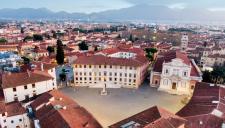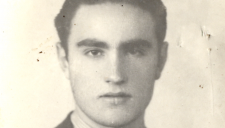Modern molecular sciences make extensive use of computational methods and theoretical simulations to model and predict the properties of a great variety of systems over a wide range of space and time scales. Coupled to the growing computational power available to researchers, the results of such theoretical calculations produce data sets of increasing size and complexity. While this situation creates a necessity for increasingly smart data analysis algorithms and procedures, it does not diminish the need for human intervention. Thus, new visualization and data fruition tools able to fully exploit the power of chemical intuition when dealing with complex data sets represent a valuable addition to a researcher’s toolbox.
In a recent work published on the International Journal of Quantum Chemistry, a team of researchers working in the SMART laboratory of the Scuola Normale Superiore (SNS) has shown that Immersive Virtual Reality (IVR) systems, such as the CAVE theater installed at SNS, can stimulate the mental processes of insight and analysis, thus leading to a deeper understanding of the phenomena under investigation. To this end the research group, led by Prof. Vincenzo Barone, presented a new molecular viewer, able to work on standard computer desktops as well as on IVR systems (such as the afore mentioned CAVE) and demonstrated the additional benefits that can be gained from a fully immersive inspection of molecular systems. As illustrative examples, the researchers focused on the visualization of molecular orbitals, protein channels and on the investigation of the dissociation mechanism of an antitumor drug from its biological target.
The software, called Caffeine, is under active development and it can manage large biological systems, like proteins and DNA fragments, as well as iso-surfaces obtained by quantum mechanical computations. The researchers are planning further improvements and new features for the near future, including a flexible representation of hydrogen bonds, a more extended visualization of volumetric and spectroscopic quantities, and the support to the latest generation of VR helmets.
Article:
Salvadori, A., Del Frate, G., Pagliai, M., Mancini, G. and Barone, V., “Immersive virtual reality in computational chemistry: Applications to the analysis of QM and MM data”, International Journal of Quantum Chemistry, 2016, DOI:10.1002/qua.25207











